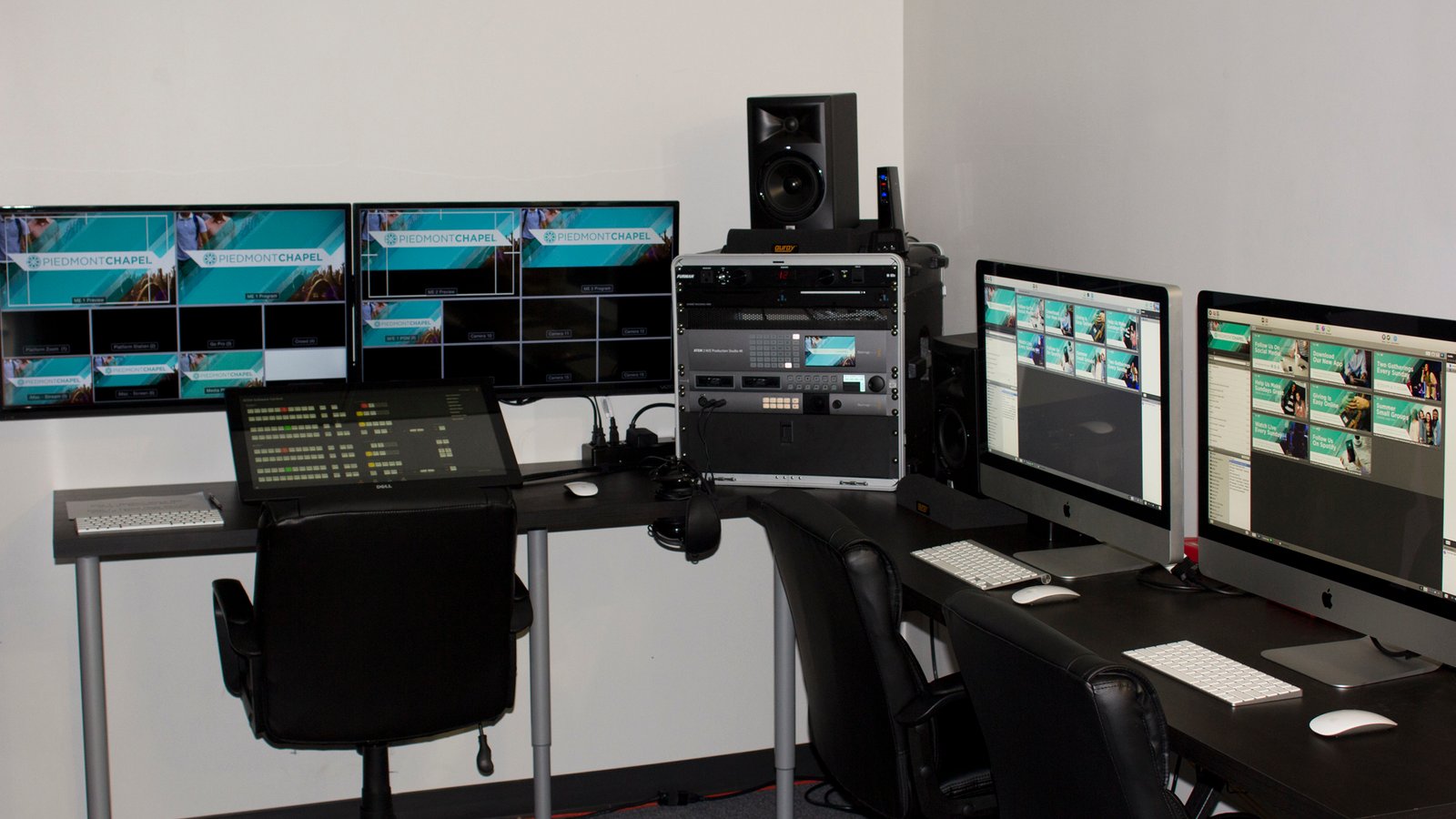Church live stream setup in Maryland is helping local churches reach more people both inside and outside their community. By streaming services online, churches can stay connected with members who can’t attend in person. Whether you’re starting from scratch or upgrading your current system, this guide will walk you through everything you need to know. From gear to internet needs, we’ll help you create a reliable, simple, and effective setup for your Maryland church.
Introduction:
Reach More Worshippers
Live streaming gives access to people who are sick, elderly, or traveling. They can still take part in the service without being at the church physically. It brings the worship experience right into their homes.
Build a Digital Ministry
Going digital allows churches to expand beyond their walls. Members can share streams with friends and family, which helps grow your reach. This makes your message available to anyone with internet access.
Support Hybrid Worship
Some members attend in person, while others prefer watching online. A live stream setup makes it easy to serve both types of worshippers at the same time. It brings flexibility without losing connection.
Planning Your Maryland Church Live Stream Setup
Define Your Goals
Start by deciding what you want to stream—full services, just sermons, or special events. Your goals will guide your choice of equipment and platforms. This keeps your focus clear and avoids wasting time or money.
Select Your Platform
Platforms like YouTube, Facebook, or a church website are popular choices. Choose the one that matches your audience’s habits. Pick a platform that is easy to use and reliable during live broadcasts.
Consider Internet and Volunteer Support
Check your church’s internet speed and connection stability. Wired connections are better than Wi-Fi for streaming. Also, make sure you have at least one or two volunteers to help with setup and operation.
Essential Equipment Breakdown
Video Sources: Cameras and Lenses
For a small church, a webcam is a good start. Larger churches might use DSLRs or PTZ cameras for better image quality and control. The camera you choose should match your budget and room size.
Audio Options: Mics and Mixers
Sound is just as important as video—if not more. Use clip-on mics, handheld mics, or a basic mixer to balance sound levels. Good audio makes your stream more enjoyable and easier to follow.
Video Encoders and Capture Devices
Encoders turn your video feed into a live stream signal. Software encoders like OBS are free and flexible, while hardware encoders are more stable. A capture device may also be needed to connect cameras to your computer.
Switchers for Multi-Camera Views
If you want to switch between camera angles, a video switcher will help. This adds a professional touch and keeps the stream dynamic. Devices like the ATEM Mini are great for churches with multiple cameras.
Live Streaming Platforms & Software Choices
Free and Paid Streaming Platforms
YouTube and Facebook are free, easy to use, and popular. Paid platforms offer more control and features, such as custom branding or better video quality. Choose based on your church’s needs and budget.
Streaming Software Options
Software like OBS, StreamYard, or Wirecast helps you manage your live video feed. These tools offer layouts, text overlays, and scene transitions. They also allow you to test everything before going live.
Choosing Based on Needs
Pick a platform that your volunteers can use comfortably. It should support live chat, allow saving past services, and reach your target audience easily. The right platform makes streaming smooth and stress-free.
Optimal Setup Workflow for Maryland Churches
Basic Streaming Setup
Start with a camera, mic, and a laptop using free software like OBS. This simple setup works well for smaller Maryland churches. It’s low-cost and easy to maintain with basic training.
Intermediate Setup for Growing Churches
Add a mixer, switcher, and higher-quality cameras as your needs grow. This gives more control over video and audio. It’s perfect for churches ready to improve stream quality without a full production team.
Advanced Setup for Large Congregations
Larger churches can invest in PTZ cameras, hardware encoders, and dedicated streaming areas. This setup is more complex but offers excellent reliability and quality. It allows full control and is ideal for broadcasting to big audiences.
Internet & Technical Considerations in Maryland
Internet Speed Requirements
A stable connection is key to avoiding dropped streams. Aim for at least 5 Mbps upload speed for HD quality. A wired Ethernet connection is best for keeping the signal strong and steady.
Testing the Network
Always test your connection before each service. Avoid running other high-usage devices on the same network. Doing a quick speed test can save your stream from freezing or cutting out mid-service.
Local Provider Awareness
Maryland churches commonly use Verizon Fios or Xfinity. Choose the provider that offers the most consistent service in your area. A strong connection builds trust with your online viewers.
Audio & Lighting Setup Tips
Clear and Balanced Audio
Place mics close to the speaker’s mouth and away from loud instruments. Use an audio mixer to balance speaking and music. Clear sound keeps your audience engaged from start to end.
Basic Lighting Setup
Good lighting helps your video look clean and professional. Use a simple three-point lighting setup: one main light, one fill light, and one backlight. This removes shadows and makes the speaker stand out.
Avoid Common Mistakes
Avoid placing lights too close or too far. Don’t point them directly at faces. Also, make sure no one is walking in front of your lighting setup during the service.
Testing, Security & Compliance
Do Test Runs Regularly
Always test your camera, audio, and internet before going live. A short practice stream helps you catch any issues. It builds confidence and reduces stress on service day.
Keep Your Accounts Secure
Use strong passwords and limit access to trusted volunteers only. Secure your login details to avoid unexpected issues during the stream. Always log out after finishing.
Follow Legal Streaming Rules
If you play music or show lyrics, make sure you have a license. Streaming copyrighted content without permission can lead to trouble. It’s better to be safe and follow all church streaming guidelines.
Training & Volunteer Team Management
Assign Clear Roles
Give each volunteer a specific task—camera, audio, platform manager, etc. When everyone knows their role, the stream runs more smoothly. It also helps build a stronger tech team.
Offer Simple Training
Keep training easy with short sessions or videos. Teach volunteers how to handle problems quickly. Encouragement and repetition make them more confident over time.
Build a Reliable Team
A strong team keeps the service running, even if one person is absent. Backup plans are also important. Cross-training your volunteers ensures someone can always step in if needed.
Upgrades & Long-Term Scaling
Add Better Equipment Over Time
Start small, then slowly upgrade to better cameras, microphones, and encoders. This avoids big upfront costs. It also helps your team adjust gradually to new tools.
Expand Your Reach
Use multi-streaming to broadcast on several platforms at once. Add chat moderators, graphic overlays, and sermon notes to improve viewer experience. These features make your stream feel more professional.
Plan for Future Growth
Think about long-term needs, like on-demand playback or mobile streaming apps. Upgrading over time keeps your church current with technology. It also keeps your online community growing.
Local Maryland Considerations & Resources
Work with Local Vendors
Look for Maryland-based vendors to buy or rent live streaming gear. Local support is faster and easier if something breaks or goes wrong. They may also offer service discounts for churches.
Know Your Internet Options
Some areas in Maryland have limited providers. Test different providers if possible, and choose the most reliable one. Consistent service means fewer dropped streams and happy viewers.
Connect with Other Churches
Talk to nearby churches that already stream online. You can learn from their setup and even share tips or volunteers. Local partnerships can be a great support system.
Conclusion & Action Plan
Setting up a church live stream setup in Maryland doesn’t need to be hard or expensive. Start with simple tools, train your team, and improve over time. Whether you serve a small congregation or a large audience, streaming helps you share your message beyond walls. With the right plan and equipment, your church can go live every week with confidence and purpose.

